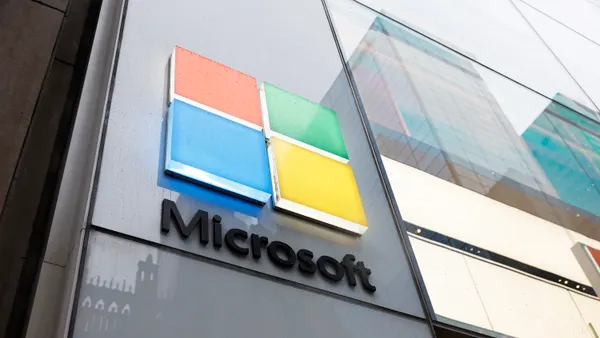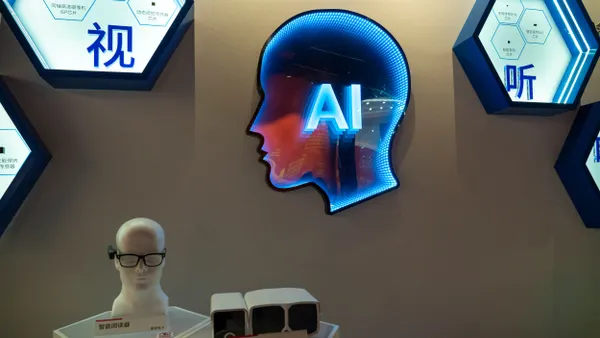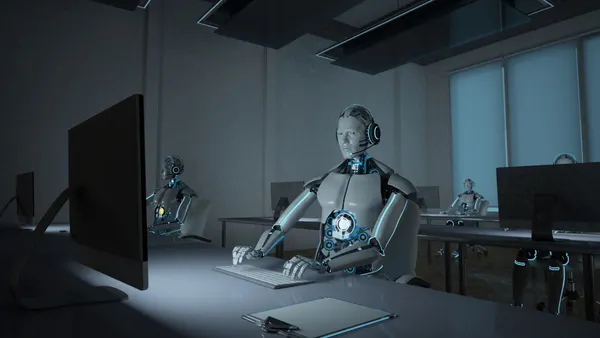So far, 2020 has pushed us out of our ‘comfort zone’ in so many ways – events across the globe have changed how we work, our daily routines and how we relate to one another on a human level. One thing is abundantly clear, “the rules we’ve lived by won't all apply¹”.
How organizations ‘show up’ today will resonate with customers, employees and candidates for decades to come. Rapid change and uncertainty has given companies one chance to show their authentic brand, retain the loyalty of customers and make an impression on both current and potential employees. As a ‘people’ leader’ – from the CHRO to talent teams and hiring managers – you’ve been thrust into the spotlight, and likely found new challenges and approaches around every corner.
Whether your organization is in the process of rehiring, rebuilding, or redeploying your people one decision has already been made for you. The current process you're running needs to be faster and better to survive.
We’re now operating in unfamiliar and new ways, often with fewer people or resources, yet driving towards a demand for more results. If we look more narrowly at just one part of the people process, changes in how we engage and hire candidates are accelerating rapidly.
The influx and variation of candidate submissions are, and will be, felt over the coming months as we begin to understand what this crisis means to our organizations, our colleagues, and our candidates. More than ever, technology will be vital to enable hiring to be more efficient, seamless, and empowering for both the candidate and the hiring manager. In some cases, that has meant implementing the fastest solution to interview, assess, offer, and onboard talent in new ways, even if it was less than ideal. The good news is that, as a result of all the rapid technology shifts, most corporate cultures are more poised for adaptation than ever before.
As we start to explore and normalize into new ways of working, consider that it may be the perfect time to:
- Retool the quick-fix talent acquisition (TA) technology solutions to support longer term process change.
- Optimize your existing TA technology ecosystem to work more efficiently.
- Address a key talent acquisition change initiative through technology enhancements.
Between budget and time limitations, however, it's impossible to do everything – which can sometimes force our hand between fast or cheap. The key is to identify just a few of the areas in which your TA tech reform can begin. Keep in mind, don't check feature/function boxes - proceed with business outcomes in mind. Here’s a starting point, three critical areas in the talent acquisition workflow I’m having conversations with clients about almost daily:
Managing Applicants
Nobody knows exactly what the future holds, and with regulations differing state by state, the influx of candidates could be a marathon for already overtasked TA teams and hiring managers. If you look at your process through the lens of simplification, you will see ways to separate the signal from the noise, which directly impacts both the speed and quality of the process.
- Leverage innovative recruiting technology to rethink the hiring workflow from explore-to-hire, in a single conversation delivered with one solution
- Take advantage of programmatic advertising to target your pipeline efforts and add focus while increasing applicant pools.
- Consider how chatbots can lessen the administrative burden for teams and handle inbound candidate inquiries. (note: If you are deploying a chatbot on your careers site to handle job discovery, ensure you aren't dumping an applicant into your ATS workflow only to ask them to answer exactly the same questions)
Qualifying Candidates
With average time-to-hire for hourly roles often 40 days or more, candidates spend a lot of time in the ‘black hole’ of waiting with very little communication – in fact, research shows us that a majority of candidates (62%) don’t even hear back after applying for a job. Given the scale and urgency of re-opening business and rebuilding our workforce post-crisis, that's far too long. Organizations like Walmart are breaking down roadblocks in the hiring process to achieve a 24 hr hiring time-to-fill for critical roles. This is a testament to how fast you can change your workflow!
- Virtual career fairs, for many organizations, have been "a big hit,":
- Think about deploying technologies that can create community in your hiring process.
- Use rapid and simple-to-use assessments to accelerate the qualification process of candidates.
Role of the Interview
When in-person interviews became impossible, CVS implemented virtual job tryouts — part-assessment, part-interview more broadly across the company but also for roles of urgent need. This gave the organization’s hiring teams back 1000's of hours, while not sacrificing speed or precision.
The use of asynchronous video platforms have quickly become an effective tool within TA workflows. One of the biggest advantages is the ability to interview multiple candidates simultaneously, leading to tremendous savings for organizations while reducing time-to-hire.
Whatever your current path, now is the time to review, assess, and update your TA tech stack to remove roadblocks and prepare for what lies ahead. If unifying the points in the talent acquisition journey through a conversational experience is something you’re exploring as you refine the hiring workflow, I invite you to take a closer look at what the Hourly team has designed.










